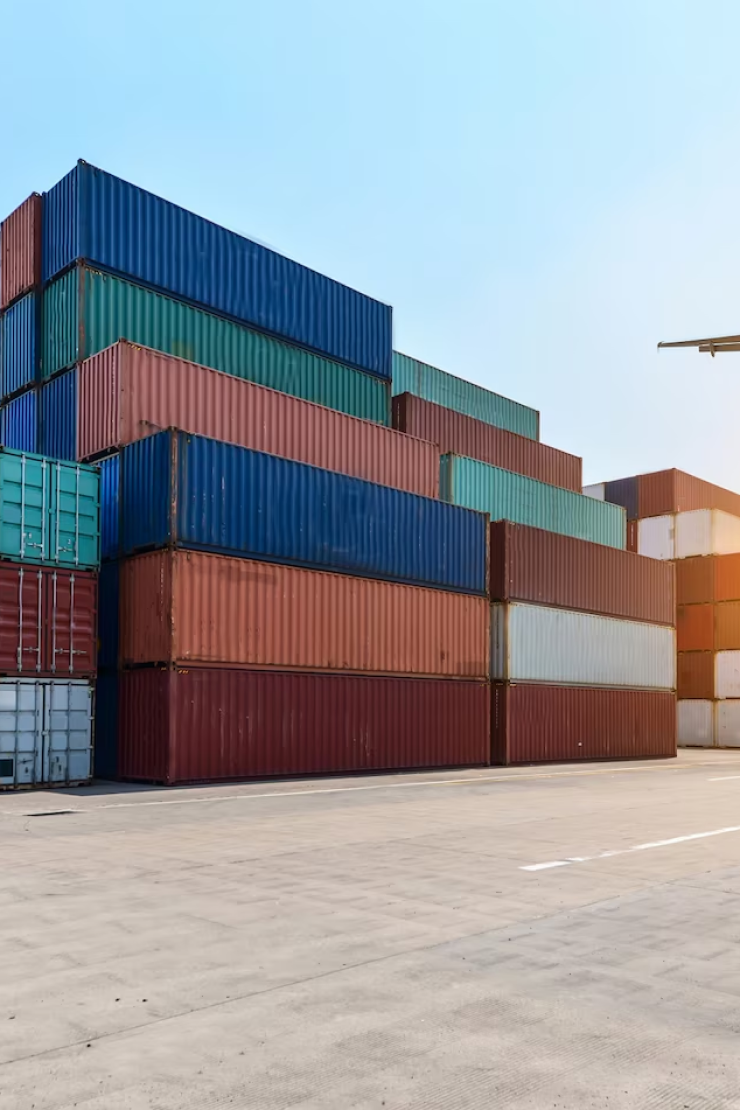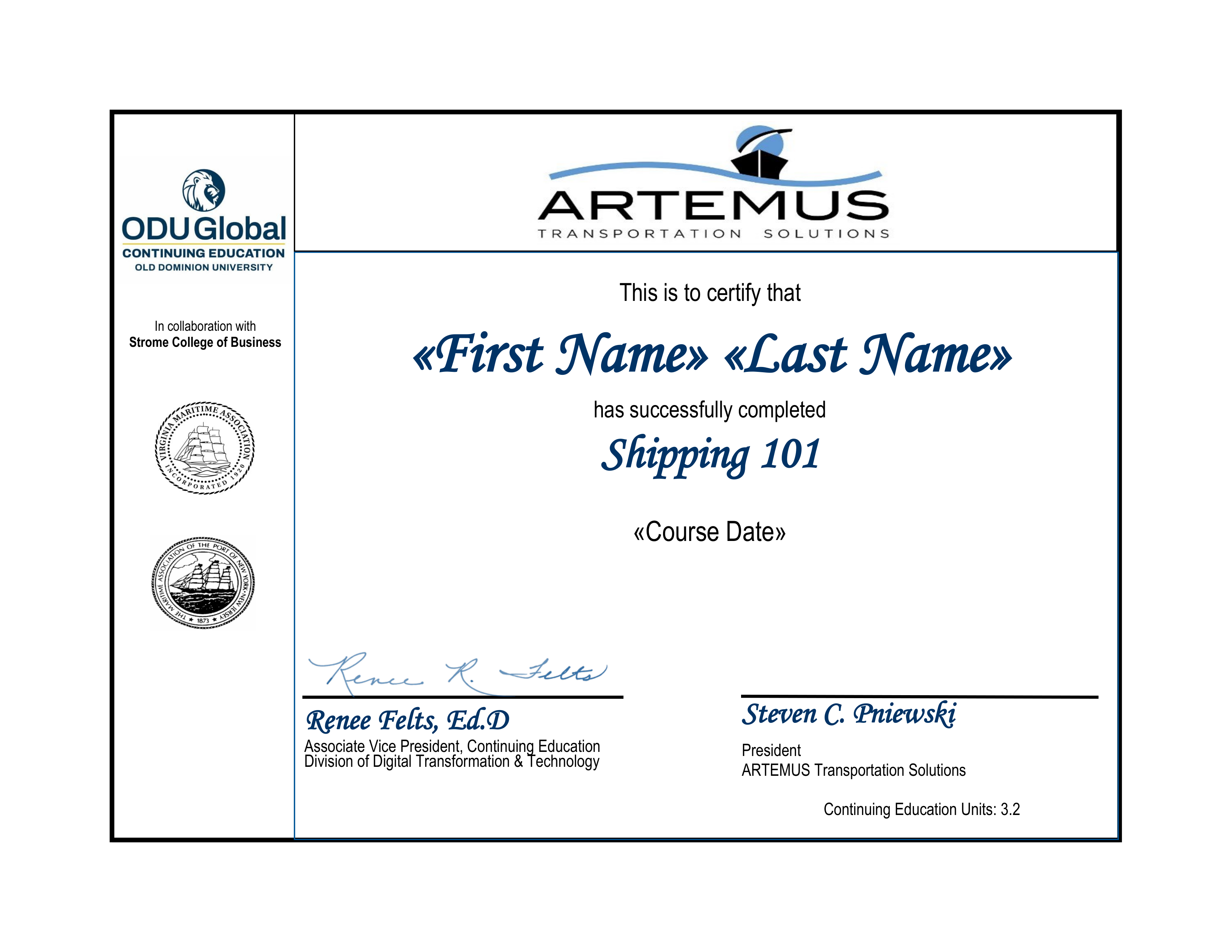Course Overview
This course provides a detailed look into import documentation, covering the essential processes, documents, & requirements involved in handling imports from discharge to final delivery.
- The Import Guide
- Procedures & Documents
- Terminal Operator Requirements
- Types Of Documents Issued
- Discharge Port Handling
What You Will Learn?
In this course, you will gain in-depth knowledge of import procedures, essential documents, & the roles of various parties involved in the import process. You'll develop a thorough understanding of how the overall import system functions.
The Import Guide
Explore the full import journey, detailing each step from shipment to delivery and the roles of key stakeholders such as freight forwarders, customs, & terminal operators.
Procedures & Documents
Learn about the critical shipping documents required at each stage, along with procedures for effectively managing & processing them at the discharge port.
Terminal Operator Requirements
Understand the specific requirements terminal operators need before cargo can be discharged, including key documentation & approval protocols.
Types Of Documents Issued
Familiarize yourself with the various documents issued at the discharge port, such as bills of lading, & their importance in the import process.
Discharge Port Handling
Gain insights into the handling processes at the discharge port, including inspection, customs clearance, & cargo release, ensuring everything runs smoothly & efficiently.
By Artemus Transportation Solutions
With a dedicated legacy since 2004, Artemus Transportation Solutions has become a trusted leader in transportation compliance solutions, offering cutting-edge ISF, AMS, Customs Broker, & eManifest Canada & Japan AFR software. Our years of hands-on industry experience allow us to deliver impactful training courses that go beyond theory, empowering professionals with real-world knowledge.
- 19+ Years of Expertise in Global Transportation Compliance Solutions.
- Practical, real-world insights into Customs, Import, and Export processes.
- Hands-on training in managing complex transportation equipment logistics.
- Efficient solutions for navigating International Shipping and related challenges.

Recognized Certification From Artemus Transportation Solutions
Upon completing the International Shipping course, you'll receive a Certificate of Completion from Artemus Transportation Solutions. This certification highlights your expertise in global shipping processes & compliance, making it a valuable addition to your skills.

Our Reviews
Frequently Asked Questions
Who Is The Course Designed For?
This course is tailored for professionals at all levels, from beginner to intermediate learners, who are looking to enhance their knowledge of global shipping, logistics, & compliance.
What Topics Are Covered In The Import Documentation Course?
The course covers essential aspects of import documentation, including an import guide, procedures and documents, terminal operator requirements, types of documents issued, and discharge port handling processes.
What Procedures And Documents Are Involved In The Import Process?
This section explains the essential procedures involved in importing goods, including customs clearance, and the critical documents such as bills of lading, commercial invoices, import licenses, and customs declarations needed to complete the import process.
Will I Receive A Certification Upon Course Completion?
Yes, you’ll receive a Certificate of Completion from Artemus Transportation Solutions, which can be showcased on your professional profiles.
Are The Courses Self-Paced Or Instructor-Led?
This course offers a flexible, self-paced learning format with video pre-recorded lessons, allowing you to complete them at your convenience. This approach enables you to learn at your own pace & revisit material as needed.
Do I Need Prior Experience In Shipping Or Logistics To Take This Course?
While prior experience is helpful, our beginner & intermediate-level courses provide foundational knowledge, making them accessible even for those new to the industry.
How Can This Course Benefit My Career?
By completing this course, you’ll gain practical, real-world insights that can boost your skills, enhance your compliance knowledge, & advance your career in the shipping & logistics industry.
What Makes Artemus’s Import Documentation Course Different From Others?
Artemus’s course offers an in-depth, practical approach to import documentation, with a focus on real-world applications. It guides learners through every step of the import process, from discharge to final delivery, with a clear understanding of all required documentation and procedures.
Import Documentation Course: Learn import topics and key documentation insights
Import documentation: essential papers for a smooth customs process
Import documentation is crucial for ensuring compliance with international trade laws and preventing shipment delays. Key documents include the bill of lading, commercial invoice, packing list, import license, and customs declaration. Each document serves a specific purpose, such as verifying product details, proving the value of goods, and confirming payment terms. Proper documentation reduces the risk of customs penalties and facilitates smooth clearance. Importers must ensure accuracy in all paperwork to avoid discrepancies. Working with a customs broker can simplify the documentation process and help navigate complex regulations.
Port of discharge: understanding its role in shipping
The port of discharge is the location where cargo is unloaded from a vessel before reaching its final destination. It plays a vital role in global trade by handling import shipments efficiently. The choice of port affects transit times, costs, and customs clearance procedures. Ports with advanced infrastructure and automation ensure quicker unloading and processing. Importers must coordinate with freight forwarders to ensure smooth cargo movement from the port. Understanding port operations helps businesses plan logistics and avoid unnecessary delays.
Port of discharging: key processes in cargo unloading
The port of discharging is where cargo is offloaded from ships and prepared for customs clearance. This process involves container unloading, inspection, storage, and onward transportation. Proper coordination between port authorities, shipping lines, and importers ensures a seamless flow of goods. Customs officials may conduct inspections to verify compliance with import regulations. Efficient handling at this stage minimizes transit delays and prevents additional charges. Businesses should stay informed about port-specific regulations and requirements.
Container was discharged at port of destination: what happens next?
Once a container is discharged at the port of destination, it undergoes several key steps before reaching the importer. First, customs authorities inspect and verify the shipment details. Then, import duties and taxes must be settled before clearance is granted. The container is either moved to a customs warehouse or released for transportation to its final location. Delays in documentation or payment can lead to additional storage fees. Importers should track their shipments and coordinate with logistics providers to ensure timely delivery.
Port of discharge meaning: a comprehensive explanation
The term "port of discharge" refers to the location where a vessel unloads cargo before inland transportation. It differs from the final delivery point, as goods may be transported further by rail, truck, or another mode. The port of discharge is crucial for determining transit routes, customs clearance, and associated costs. Efficient port operations ensure goods move quickly through the supply chain. Importers should select ports strategically to optimize logistics and minimize expenses.
Port of discharge means: interpreting shipping terms correctly
"Port of discharge" is a common shipping term that signifies the port where goods are unloaded from a vessel. It is not necessarily the final destination, as cargo may require further transport. This term is often mentioned in shipping contracts, bills of lading, and customs documents. Understanding this term helps importers coordinate logistics and anticipate handling fees. A clear distinction between the port of discharge and the port of entry is essential for smooth cargo movement.
How to import goods: a step-by-step guide for businesses
Importing goods involves several steps, including market research, supplier selection, and compliance with regulations. Businesses must first determine product demand and identify reliable overseas suppliers. Next, they must obtain necessary licenses and ensure all import documentation is in order. Choosing the right shipping method and customs broker helps facilitate smooth clearance. Understanding tariff classifications and duty structures prevents unexpected costs. Proper planning and compliance ensure a successful import process.
How to import goods from abroad: legal and logistical considerations
Importing goods from abroad requires adherence to legal requirements, including customs regulations, trade agreements, and tax policies. Importers must research the rules applicable to their product category and destination country. Key logistical considerations include choosing a reliable freight forwarder, selecting an appropriate shipping method, and preparing accurate documentation. Understanding currency exchange rates and payment terms is also essential. Businesses should work with experienced professionals to avoid costly mistakes and ensure smooth operations.
How to import goods from China: best practices and compliance tips
Importing from China can be highly profitable but requires careful planning and compliance with regulations. Businesses must verify supplier credibility, negotiate favorable terms, and understand the Incoterms governing their shipments. Proper classification of goods and accurate documentation help prevent customs delays. Importers should be aware of anti-dumping duties, intellectual property laws, and quality control measures. Partnering with a trusted freight forwarder ensures efficient transportation and minimizes risks.
FAQs
-
What is import documentation, and why is it important?
Import documentation refers to the set of official documents required to bring goods into a country legally. These documents ensure compliance with customs regulations, facilitate smooth clearance, and prevent delays or penalties. Essential documents include the bill of lading, commercial invoice, packing list, and import license.
-
What are the key documents required for importing goods?
The primary documents needed for import include:
- Bill of Lading (B/L) – A transport document issued by the carrier.
- Commercial Invoice – Details the value, quantity, and description of goods
- Packing List – Provides specifics on the packaging and weight of the shipment.
- Import License – Required for restricted or regulated items.
- Customs Declaration – A form declaring the details of imported goods to customs authorities.
-
What is a port of discharge?
The port of discharge is the location where cargo is unloaded from a vessel before being transported to its final destination. It is a key part of the supply chain and plays a crucial role in customs clearance and logistics planning.
-
How is the port of discharge different from the port of destination?
The port of discharge is where cargo is unloaded from the ship, while the port of destination is where the shipment is finally delivered. In some cases, goods may need additional transportation after discharge, such as rail or truck transport, to reach their final location.
-
What happens after a container is discharged at the port of destination?
Once a container is discharged at the port of destination, it goes through customs clearance, where authorities inspect the goods and verify documentation. Import duties and taxes must be paid before the shipment is released for delivery. The cargo is then transported to its final destination.
-
How can I check if my goods have arrived at the port of discharge?
You can track your shipment using the bill of lading number or container tracking system provided by your freight forwarder or shipping carrier. Most ports and logistics companies offer online tracking services for real-time shipment updates.
-
What are the steps to import goods successfully?
To import goods efficiently, follow these steps:
- Research regulations – Understand the import laws of your country.
- Find a reliable supplier – Verify the credibility of the exporter.
- Choose a shipping method – Select air, sea, or land transport based on cost and urgency.
- Prepare documentation – Ensure all required paperwork is accurate.
- Clear customs – Pay import duties and comply with inspections.
- Receive goods – Arrange for final delivery to your warehouse or store.
-
What are the import requirements for goods from China?
When importing from China, you must:
- Verify supplier credibility and negotiate favorable Incoterms.
- Ensure compliance with customs regulations and anti-dumping laws.
- Obtain necessary documentation, including the bill of lading, commercial invoice, and certificate of origin .
- Understand import duties, tariffs, and any applicable trade agreements.
-
How can I avoid delays in the import process?
To prevent import delays:
- Ensure all documentation is complete and accurate.
- Work with an experienced customs broker or freight forwarder.
- Stay updated on import regulations and tariffs.
- Plan for customs inspections and clearance times.
-
Do I need an import license for all goods?
Not all goods require an import license. However, regulated items such as pharmaceuticals, chemicals, and restricted goods may need special permits. Always check with your country’s customs authority before importing.
















